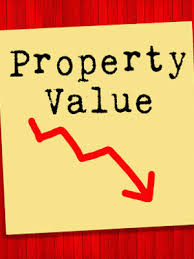
The Yield curve inverted for the first time since 2007! What does this mean and why is this so important for real estate? Can the animals predict our next “storm”? Should we all be listening to our “primal” instincts a bit more? We probably should. I was doing a long trail run last week in the Colorado backcountry outside of Steamboat Springs, Colorado. On my run, I saw tons of animals. I joked that I thought I was getting on Noah’s ark having seen two moose, two coyotes, etc… There was definitely something brewing for animals to be that active during the day. I checked the weather; according to the forecasters, all the storms were hundreds of miles south. A day later I awoke with over 18 inches of snow on the front lawn!
The animals were right in predicting the upcoming storm. Should we be listening more to our “animal instincts”? Just like on my run, the current predictions coming out of the federal government paint a “rosy” picture of a tranquil economy with good growth, moderate inflation, and a healthy economic outlook. Sounds like the weather forecast before my run! Is this all a façade? Is the economy really as tranquil as the forecasters predict?
It seems the market is not buying the tranquil weather forecast. If you look at what the market participants are doing their actions paint a radically different picture than the forecast. There is a storm brewing that we all need to pay attention to and just like the animals, we need to prepare.
How do I know there is a storm coming? In an economic expansion short and long-term interest rates rise along with wages. Consumer rates (like mortgages) also rise because of the future expectations of inflation in an expansionary cycle. In today’s environment short term rates have risen, but long term mortgage rates have started to fall. Wages have also been relatively stagnant. The weather forecast based on rates and wages definitely looks a bit cloudy.
Why are rates important to watch? Every recession in recent history has been preceded by an inversion of the yield curve. In a nutshell, short term rates exceed long term rates. . When short term rates exceed long term rates this is the market’s way of saying that they are not buying future growth expectations.
What is inversion?
What does an inversion mean? If you plot short and long-term rates on a graph in a growing economic cycle, as short-term rates increase, long term rates should also increase. Long term rates are a gauge of long-term economic prospects and as they increase, they signify that the market anticipates future growth. If the short-term rates and long-term rates invert (meaning short term rates are more expensive than long term rates) the market is warning that long term growth prospects are not good. The yield curve has accurately predicted the last seven recessions. The yield curve inverted on 3/22/19 for the first time since 2007. This is a clear sign that the market is not buying the long-term economic growth prospects of the US economy and a warning that a recession is now imminent.
Along with hard metrics like yield curve, there are other indicators pointing to a not so rosy future. When considering the future, I like to look at what consumers spend their most money on (autos and homes) and what moves are others taking in the market in order to take advantage of opportunities.
What are market participants doing? Along with an inversion of the yield curve, market participants are beginning to position themselves for adverse “conditions”. Marathon Asset Management, a thirteen billion dollar fund, announced that it was setting up a distressed fund to take advantage of opportunities that will be created by another global slump. Bruce Richards, the manager of the fund, feels like the next slowdown will create “whoppingly huge opportunities” in the near term.
What about autos? Autos are typically the second largest household purchase. Over 90 percent of all new autos are purchased with financing as vehicles become more expensive. Recently warning signs are flashing for the auto finance industry. According to a Marketwatch article, a unit of Dow Jones,
“Subprime auto-loan default rates match those seen just before the 2007-2009 recession. It’s a red flag that’s been flapping for some time for analysts worried it could pose risks to the broader credit market, bank health and, ultimately, the consumer-driven economy.”
Why are subprime auto loans such an important indicator? First, non-prime loans (credit score under 660) make up 41% of the auto financing market (source experian). As we saw in the last crisis, subprime/ non-prime mortgages were the main trigger of the last crisis. Although autos are a much smaller part of the economy, it is unlikely that autos by itself will cause a recession; but, they could be a leading indicator of what is to come. For example, as people default on their auto loans credit scores decline and their overall “borrowing ability” declines. This leads to a cycle ultimately resulting in less consumer confidence and less consumer spending.
Will real estate pop? As a lender with a portfolio of loans throughout Colorado, Georgia and Florida, I watch the yield curve closely. The yield curve is a double-edged sword. As long-term yields decline so do long term interest rates. Mortgage rates have fallen bringing the 30-year fixed rate well under 4%. This should help with the affordability of real estate as payments will be lower. On the flip side longer term yields that are falling are indicative of a less rosy economic future. As consumers get nervous, they delay large purchases like homes and autos. Fortunately, there isn’t a trigger like the “liar loans” of the past and I don’t think that real estate will tumble like in the last recession. We should see flattening to slight decline, but not a cliff drop like the last crisis.
Although the economic future on the surface looks tranquil, the animals are predicting a change is looming. Just as animals can “sense” a change in pressure to predict a storm, leading indicators are also predicting an economic storm brewing. Like in the movie Bambi, where all the animals are stampeding out of the forest, you likely shouldn’t stop to ponder what they are running for; you should trust your animal instinct. Although the storm is not directly upon us yet, now is the time to start preparing. Will you listen to your inner animal?
